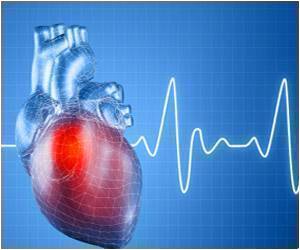A new smartphone-linked device developed by scientists could help assess the effectiveness of muscular dystrophy medications.

Physicist Michael S. Hughes of the Department of Energy's Pacific Northwest National Laboratory performed the work with colleagues John E. McCarthy, Jon N. Marsh, and Samuel A. Wickline while at Washington University in St. Louis, Missouri.
Although a small study involving animals, it builds on work in people that shows noninvasive ultrasound can track muscle health. Duchenne muscular dystrophy -- often shortened to DMD -- affects one out of 3500 male births. Steroids can help slow muscle degeneration, but too much medication causes other issues such as weight gain and high blood pressure.
"The result implies you can monitor drug therapy with cheap point-of-care devices," said Hughes. "We'd like to be able to use low-power handheld instruments, such as a microphone-sized ultrasound that can fit on a smartphone."
Healthcare workers and patients want fast, easy-to-use medical instruments and diagnostic tests that they can bring to a patient's bedside, home or to the field. Some treatments for disease require constant monitoring, such as blood glucose in people with diabetes or blood pressure for those with heart disease.
In DMD, muscles fail to repair themselves adequately, causing the muscles to degenerate over a few decades. Young boys and men with the disease -- whom DMD hits the most -- usually take steroids to prolong muscle health. Steroids have serious side effects, so patients should only take as much as they need, but it's difficult to monitor effectiveness.
Advertisement
Previously, researchers, including Hughes, McCarthy and colleagues, have studied mice with genetic mutations that emulate muscular dystrophy. Treating mutant mice with steroids, they found they could process ultrasound information in such a way that they could measure the difference between healthy, damaged and treated muscles -- a method that could put out a number on a screen.
But earlier work required more data than small, hand-held ultrasound gadgets, hooked into a smartphone with a USB cable, would be able to collect. Hughes and McCarthy wanted to know if they could also distinguish between healthy, sick and treated muscles if they collected less than 10 percent of the original data. They turned back to the ultrasound data they had collected on five healthy mice, four afflicted with mouse muscular dystrophy left untreated, and four afflicted but treated with steroids for two weeks.
Advertisement
The team found that even with only one-sixteenth of the data, they were able to measure the difference between the treated muscles and the untreated muscles. Of course, people have much larger muscles than mice do, so the researchers would have to adjust the amount of ultrasound data to account for that, but Hughes and McCarthy previously showed that is possible in a different study.
"If we can optimize the processing, we can increase the sensitivity and provide real-time performance," said Hughes. "People with muscular dystrophy have to take the least amount of steroid that will give them the maximum therapeutic effect. This would let them do that."
This work was supported by the National Institutes of Health and the National Science Foundation.
Source-Newswise












